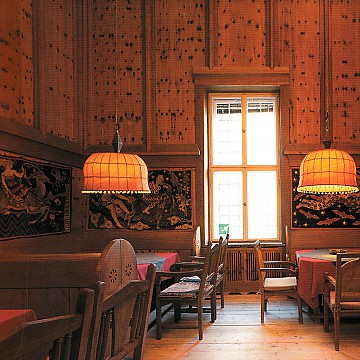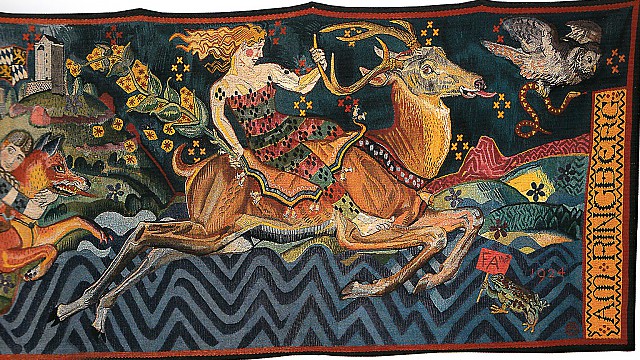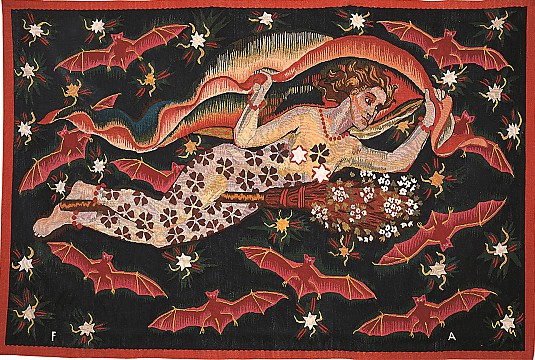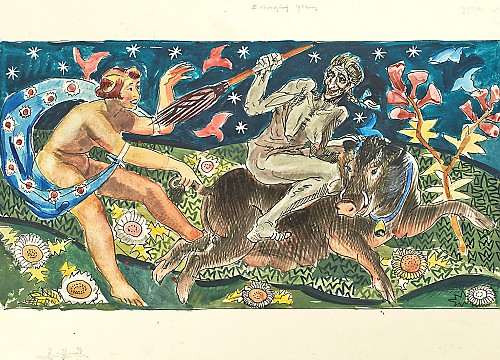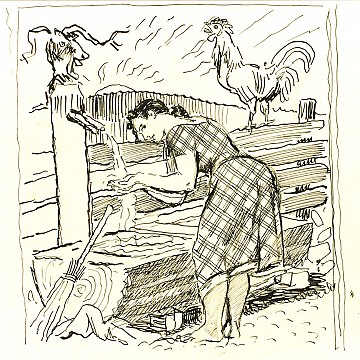Witches´
Room
– 6 –
The ride of the witches on Walpurgis Night: Attenhuber's brilliant masterpiece of Gobelin tapestry design
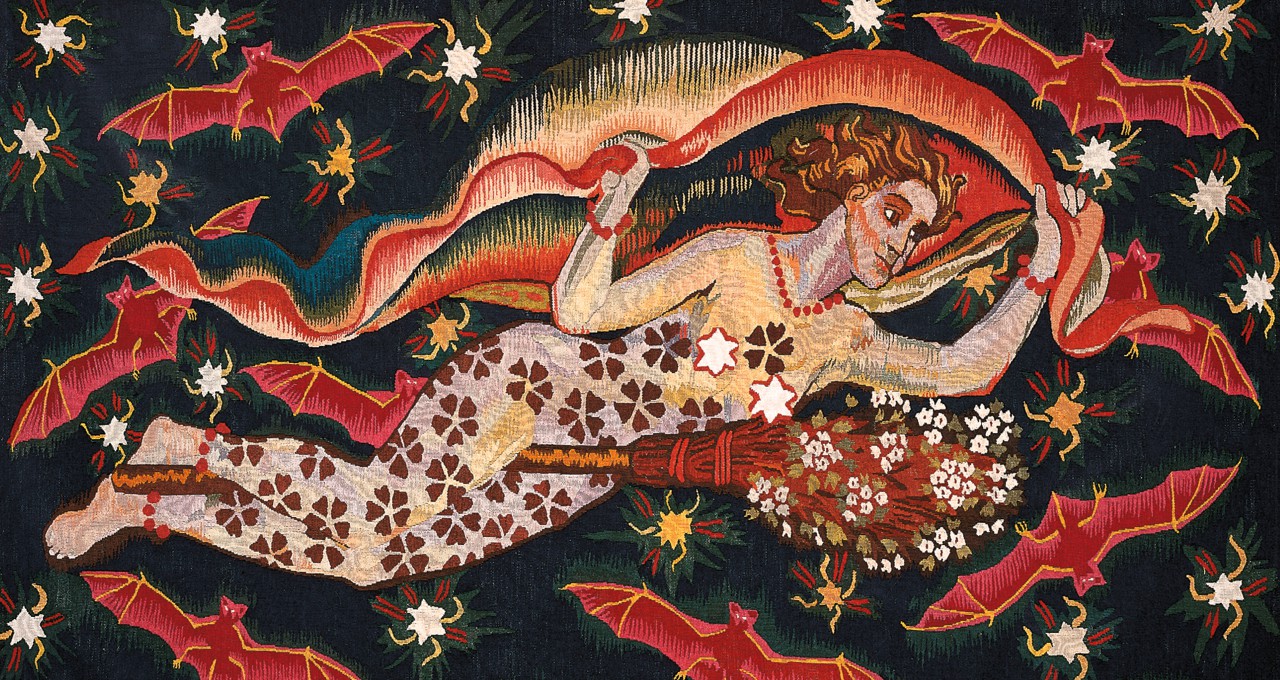
ABOUT
Adjacent to the so-called Landshuter Treppe (Landshut staircase) is probably the castle's most unusual room, the Witches' Room. Its name refers to the elaborate Gobelin frieze which runs around four sides of the room, beneath the wooden wall panelling made of Swiss pine. Friedrich Attenhuber designed it in 1924.
The witches whirl around on their broomsticks in a wild hunt. They ride on deer, chamois, foxes and wild boar on Walpurgis Night, providing the room with mythical vibrancy. The legend of witches on the Ringberg is steeped in tradition, according to which, witches from the entire region met on the Ringberg to form a coven. Attenhuber picks up on this theme in the elaborately crafted Gobelin tapestries, which is one of his best works.
The »Witches' Ride on the Ringberg« is the main motif of the six Gobelins. The lascivious depiction of the witches in their tight-fitting clothing symbolises a permissive lifestyle. In the middle of the scene, two devils dance ecstatically around the hell fire on a red-hot mountain. To the right of them is Schloss Ringberg with a humanlike full moon behind it. The ducal coat of arms appears to form the link between the Belvedere tower and the guest tower adjoining it on the right. In humorous contrast to the ride of the witches, a frog in the bottom right holds a small red panel with the initials »F.A.« of the house artist.
The oversized, bell-shaped hanging lamp above the table bathes the room in a warm light in the evening, wonderfully accentuating the colourfulness of the witches' tapestry.
Another special feature of the Witches' Room is the green tiled stove with its rare tiles containing graphic patterns painted in black. It was made in Tirol in the 17th century and is the only purchased antique in Schloss Ringberg.
The Witches' Room was originally intended as a main lounge for guests. The Duke had wanted to play cards with his guests in the Witches' Room. The room was therefore initially called the Tarot Room and was to be comfortably furnished: »If you design seats for the Tarot Room,« wrote the Duke in a letter to Attenhuber on 2 August 1915, »remember that cards will be played here for several hours – the seats therefore have to be extremely comfortable.« Like all other rooms in the castle, the Witches' Room was never used during the Duke's lifetime. Only after the Max Planck Society occupied Schloss Ringberg did the Witches' Room become a place of relaxation, discussion and exchange of ideas.
